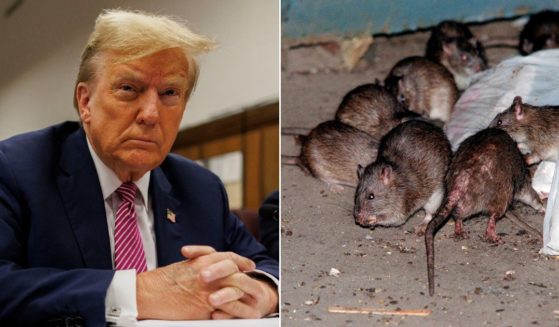Al Gore's Extinction Prediction Shredded as Big Cat May Be Removed From Endangered Species List
One of Al Gore’s scariest, most sobering lines in “An Inconvenient Truth” is “species loss is now occurring at a rate 1,000 times greater than the natural background rate.” Cut with footage of polar bears struggling to survive in a changing world, this appeals directly to our empathy centers.
But the reality is nowhere near Gore’s prediction.
For instance, the Canada lynx, a species of big cat native to the United States and Canada, was placed on the Endangered Species List in 2000, accoridng to the U.S. Fish & Wildlife Service. That was a full six years before Gore’s “An Inconvenient Truth” was first released. Despite the prediction of massive species extinction, though, the Canada lynx is now classified as “Least Concern” by the International Union for the Conservation of Nature Red List of Threatened Species.
How did this happen?
Was it the left’s push for carbon taxes and the Paris Agreement that saved the Canada lynx? Since the agreement only started in April of 2016, that’s not what did it.
In fact, according to the U.S. Fish & Wildlife Service, the species may no longer warrant a presence on the endangered species list, and said responsible landowners and sportsmen are the ones to thank for the big cat’s meteoric recovery.
The FWS released a statement saluting the “almost 20 years of working in partnership with state, federal, tribal, industry and other land managers on the conservation of this species” that is now resulting in the potential removal of the Canada lynx from its protection lists.
According to the FWS, the proposal still must go through the Federal Register for public comment before a final decision is made.
For anyone with experience in the outdoors, this doesn’t come as a surprise. Responsible stewardship of nature is the primary goal of any hunter, fisherman, or logger.
The reason for this is obvious, if you look back in history.
Human expansion comes naturally with a reduction of apex predator species. These superpredators often compete with human interests. For example: In the early days of the Old West, wolves were responsible for attacks on livestock. What followed was hunting that reduced the number of wolves. Populations of deer and other prey animals then lost a major factor in keeping their numbers in check.
One place we can see the effects of a prey population unhindered by predators — and without human control — is on St. Matthew Island.
During World War II, the island was a remote post in the waters off Alaska. In 1944, over 20 reindeer were released there as an emergency food source against the possibility that the Japanese were able to cut off supplies. A year later, the war was won and the men left the island without killing a single reindeer.
The next recorded contact with the island was by biologist Dave Klein in 1957. Thirteen years of as much food as the reindeer could eat, and no threat of wolves or human hunting, had increased the herd’s size by 1,200 animals.
Six years later, Klein visited the island again, this time noting that the herd had increased to 6,000 reindeer.
This is where the necessity of human intervention becomes clear. The herd grew and consumed with nothing to keep its numbers controlled. The reindeer population nosedived from 6,000 to 42 in only three years, often a result of painful diseases and starvation killing the animals. Within the next decade, the only thing left of the herd were bleached skeletons. There were no more reindeer on St. Matthew Island.
Responsible hunting and conservation could have preserved the herd, and St. Matthew Island could have been a hunting destination for generations to come. Now, it’s a barren island with the only residents being a few hares, foxes, and birds.
With President Donald Trump in charge, resource and nature management is on track to be placed back in the hands of the sportsmen and outdoorsmen who can do it best.
H/T Wide Open Spaces
Like and share on Facebook and Twitter and let us know how important you think sportsmen are to the environment.
Truth and Accuracy
We are committed to truth and accuracy in all of our journalism. Read our editorial standards.













